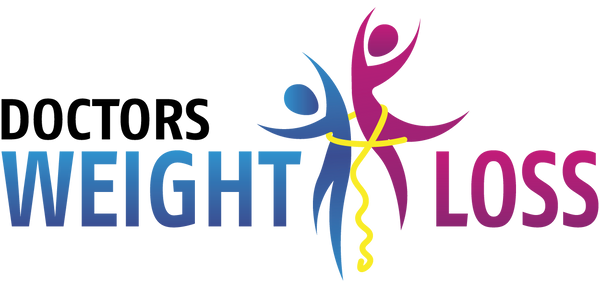As a nutritionist, I sometimes get asked about the dreaded plateau and how to shake it. Usually, if you follow an effective nutrition plan with proper caloric intake and macro-nutrients accurately, you should not hit a plateau, but it can happen. If you’re not sure what a plateau is, it’s when your weight loss results become stagnant for more than a few days. If you run into this issue, it’s time to change it up and to reassess your nutrition plan.
If you do hit a plateau, before making any drastic changes, fully assess how you have been eating for the past week. If you have been truly sticking to your nutrition plan, the next step is to track every single calorie, gram of carbohydrate, gram of fat, gram of protein, and gram of sugar that goes into your body. You may find that maybe your nutrition plan hasn’t been as targeted as you assumed. If it has been perfectly accurate in terms of carbohydrates, fats, and proteins, you may require less calories to achieve your ideal weight. If that’s the case, try lowering your caloric intake by 300-500 calories per day and adjust your macronutrients (fat, carbs, protein) to fall into alignment with your new/lower calories as a guide. For weight loss and/or maintenance, I recommend an average of 75-150 grams of carbohydrates, 75-150 grams of protein, and 65-80 grams of healthy fats per day as a general guideline, which falls in the range of 1200-1900 calories per day.
If you’re certain your nutrition plan doesn’t need tweaking and you’re just in a genuine plateau that your body won’t snap out of, a possible solution is a strict five-day eating plan paired with intermittent fasting. Intermittent fasting is a general term for various meal planning schedules that cycle between voluntary fasting and non-fasting over a reoccurring time period. Intermittent fasting is complimentary to a lower-carbohydrate and lower-sugar nutrition plan. When you are given a certain “feeding window”, lower calorie consumption may naturally occur which can be an easy way to break a plateau. Studies and human trials do suggest that intermittent fasting may have beneficial effects on weight, body composition, cardiovascular biomarkers, and aging. At the cellular level, intermittent fasting may also increase resistance against oxidative stress, decrease inflammation, and promote longevity.
There are several ways to employ intermittent fasting and some are much more doable for some than others. Below are five popular intermittent fasting schedules:
- 16/8 Method: this involves fasting everyday for sixteen hours, allowing food and beverage consumption (besides water) for only eight hours.
- 5/2 Method: this involves eating a normal schedule of food for five days per week with no fasting on those days. The other two days per week will be restricted to 500 calories for women and 600 calories for men.
- Eat Stop Eat: this involves eating normally with no fasting for two days and then eating nothing for twenty-four hours and repeating that pattern.
- Alternate Day Fasting: this involves eating normally one day with no fasting and then eating only a few hundred calories the next day, repeating that pattern.
- Spontaneous Meal Skipping: this involves skipping at least one meal per day, not in any given pattern.
My recommended method of fasting is the 16/8 method because most of the fast takes place during sleeping hours, making it more realistic for people to achieve. I don’t prefer any measures which include not eating for a full day or eating very little as that can lead to an unhealthy relationship with food, in addition to feeling so hungry that a binge could easily happen.
If you're curious what an intermittent fasting schedule looks like, I have put together an example plan below that falls in the lines of the 16/8 intermittent fasting method, meaning you will have an eight-hour feeding window. Another approach is that you try the 16/8 method first along with the typical foods you have been consuming already. If that doesn’t break the plateau, pair the 16/8 method with the following nutrition plan.
16/8 Intermittent Fasting Schedule
8-Hour Feeding Window: 10am-6pm (feel free to adjust as long as the window is eight hours, such as 11am-7pm or 9am to 5pm)
Before 10am: Any beverage with no calories such as water, plain tea, and black coffee.
10am Breakfast: Coffee with milk or cream, scrambled eggs topped cheese and avocado slices; side of berries or sliced tomatoes.
12pm Snack (optional): Celery and nut butter
1:30pm Lunch: Leafy green salad topped olive oil, vinegar, canned tuna, diced red onion and tomatoes.
3pm Snack (optional): Small apple
6pm Dinner: Chicken breast, zucchini cooked with olive oil, steamed cauliflower mashed with grated Parmesan cheese.
After Dinner: Any beverage with no calories such as water, plain tea, and black coffee.
If you're one who doesn't have time to prepare food throughout the day, our Ideal Protein Alternative Program works perfectly with the intermittent fasting schedule. Not to mention, when pairing our low-carbohydrate and low-sugar program with this eating schedule, results are very common. Here's our IP Alternative intermittent fasting schedule.
Before 10am: Any beverage with no calories such as water, plain tea, and black coffee.
10am Breakfast: Protiwise chocolate shake
12pm Snack (optional): High-protein chips
1:30pm Lunch: Protiwise soup *optional to add protein and vegetables to the soup or pair with a side salad
3pm Snack (optional): Protiwise bar
6pm Dinner: Chicken breast, zucchini cooked with olive oil, steamed cauliflower mashed with grated Parmesan cheese.
After Dinner: Any beverage with no calories such as water, plain tea, and black coffee.
All meals and snacks before dinner are conveniently pre-packaged with the proper macronutrients calculated for you, so it takes out all of the guesswork! You can click here to read more about the IP Alternative Program, or feel free to schedule your complimentary nutrition consult here to discuss the perfect plan for your individual preferences.






